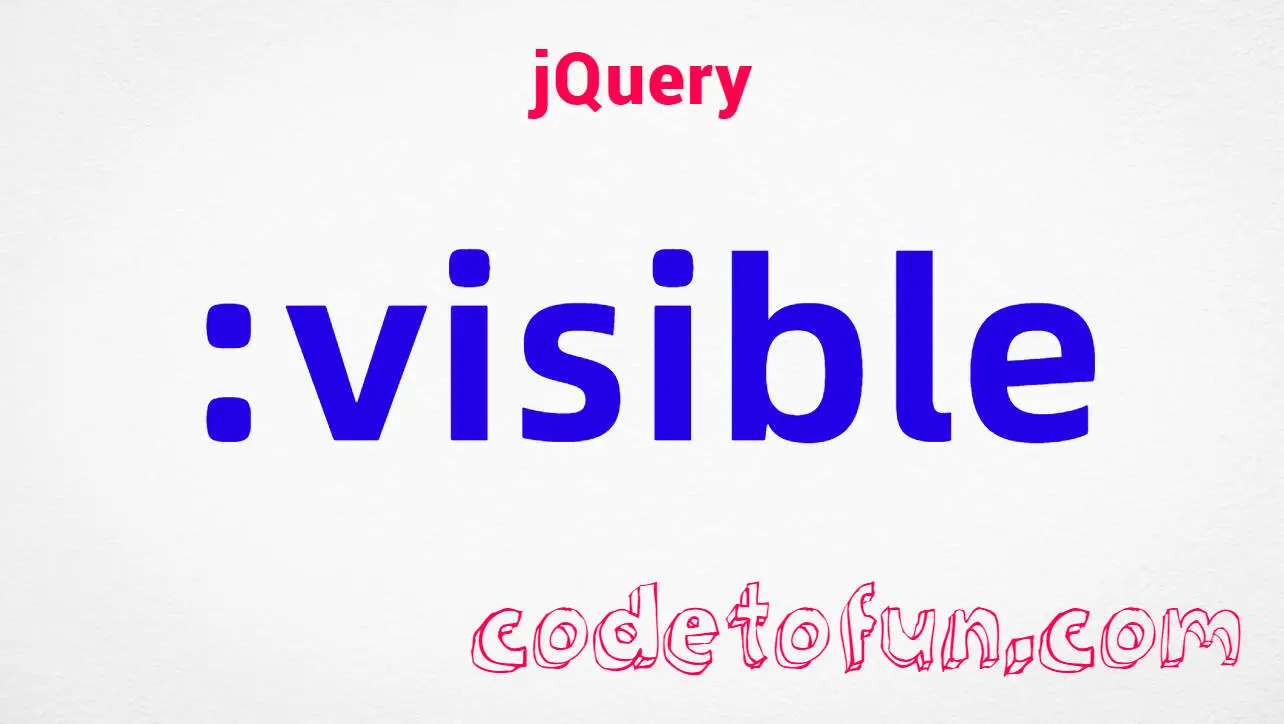
jQuery Selectors
jQuery :visible Selector

Photo Credit to CodeToFun
🙋 Introduction
In web development, creating dynamic and interactive user interfaces often involves manipulating the visibility of HTML elements based on certain conditions. jQuery simplifies this process with its :visible selector, allowing you to easily target elements that are currently visible on the webpage. Understanding and mastering this selector can significantly enhance your ability to create engaging user experiences.
In this guide, we'll explore the usage of the jQuery :visible selector with clear examples to help you harness its power effectively.
🧠 Understanding :visible Selector
The :visible selector in jQuery is designed to target HTML elements that are currently visible within the document's layout. It is particularly useful when you want to perform actions or apply styles to elements based on their visibility status.
💡 Syntax
The syntax for the :visible selector is straightforward:
$(":visible")📝 Example
Selecting Visible Elements:
Suppose you have a webpage with several elements, some of which are hidden initially. You can use the
:visibleselector to select only those elements that are currently visible:index.htmlCopied<div id="visibleDiv">This is visible</div> <div id="hiddenDiv" style="display: none;">This is hidden</div>example.jsCopied$("div:visible").each(function() { console.log($(this).text()); });This will log the text content of the visible div (This is visible) to the console.
Toggling Visibility:
jQuery allows you to toggle the visibility of elements with ease. Here's an example where clicking a button toggles the visibility of a div:
index.htmlCopied<div id="toggleDiv">Toggle me!</div> <button id="toggleButton">Toggle Visibility</button>example.jsCopied$("#toggleButton").click(function() { $("#toggleDiv").toggle(); });This will toggle the visibility of the toggleDiv element each time the button is clicked.
Applying Styles to Visible Elements:
You can also apply CSS styles to visible elements dynamically using jQuery. For instance, let's change the background color of visible divs:
index.htmlCopied<div class="visibleDiv">Visible Div 1</div> <div class="visibleDiv" style="display: none;">Visible Div 2</div>example.jsCopied$(".visibleDiv:visible").css("background-color", "lightgreen");This will set the background color of the visible divs to light green.
Filtering Visible Elements within a Specific Context:
Sometimes you may want to select visible elements within a specific container. You can achieve this by specifying the context:
example.jsCopied$(".visibleDiv:visible", "#container").css("border", "2px solid red");This will add a red border to visible divs within the element with the ID container.
🎉 Conclusion
The jQuery :visible selector is a valuable tool for targeting and manipulating elements based on their visibility status. Whether you need to select visible elements, toggle visibility, apply styles, or filter within a specific context, this selector provides a convenient solution.
By mastering its usage, you can create more dynamic and responsive user interfaces in your web projects.
👨💻 Join our Community:
Author

For over eight years, I worked as a full-stack web developer. Now, I have chosen my profession as a full-time blogger at codetofun.com.
Buy me a coffee to make codetofun.com free for everyone.
Buy me a Coffee











